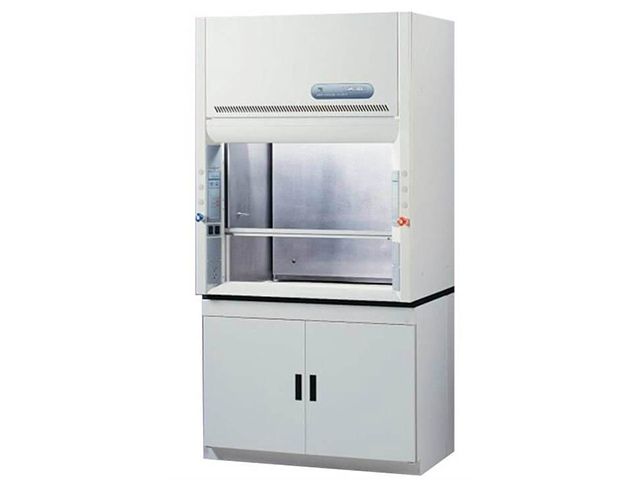Radioisotope Fume Hood
A specific kind of containment tool used in labs handling radioactive materials is the radioisotope fume hood. A radioisotope fume hood's main function is to give lab workers and researchers who work with radioactive materials a safe place to operate. These hoods are made to trap and release radioactive dust, vapors, and particles into the atmosphere that are produced during procedures or tests. Specialized airflow systems in these fume hoods are intended to efficiently absorb and confine radioactive pollutants. To avoid exposure, the airflow is usually directed toward the exhaust system and away from the user. Additionally, extra shielding is incorporated into radioisotope fume hoods to reduce laboratory personnel's exposure to radiation. This can include lead shielding in essential sections or thicker construction materials to reduce radiation. Before the exhaust air is released into the atmosphere, radioisotope fume hoods frequently use HEPA (High-Efficiency Particulate Air) filters or other specialized filter media to remove pollutants and radioactive particles. These filters are made to stop the release of even minuscule particles by capturing them. In order to guarantee adequate airflow and containment, radioisotope fume hoods are equipped with safety measures like airflow alarms, automated sash closures, and monitoring systems. When choosing and utilizing radioisotope fume hoods, adherence to pertinent safety standards and regulations—such as those established by agencies like the International Atomic Energy Agency (IAEA) or the Nuclear Regulatory Commission (NRC)—is crucial to guaranteeing the security of lab workers and following local laws. Installation of ropers and routine maintenance are essential to their performance. The safety of radioisotope fume hoods is enhanced by the frequent use of HEPA (High-Efficiency Particulate). To make sure the hood is operating properly and offering sufficient containment, this entails routine inspection, testing, and certification.
 Whatsapp
Whatsapp


